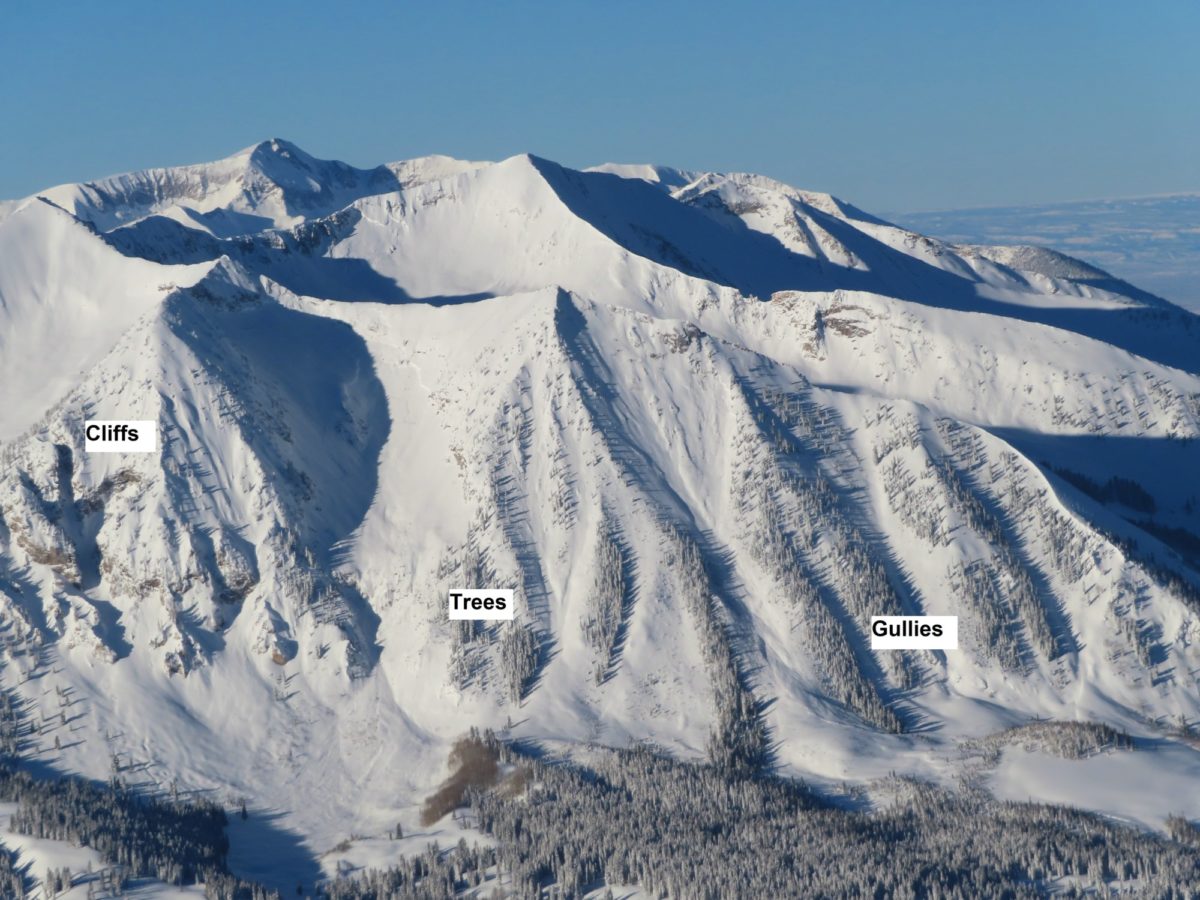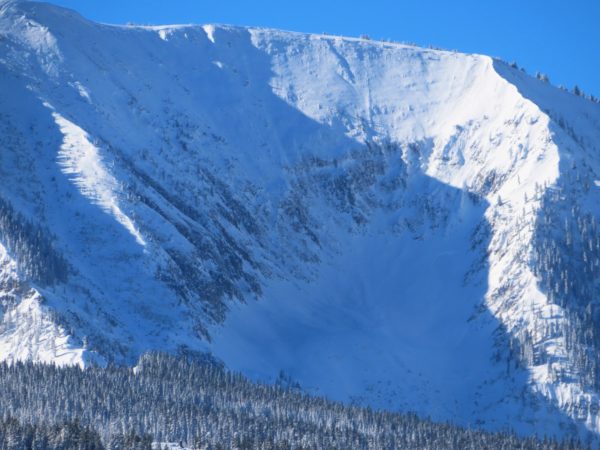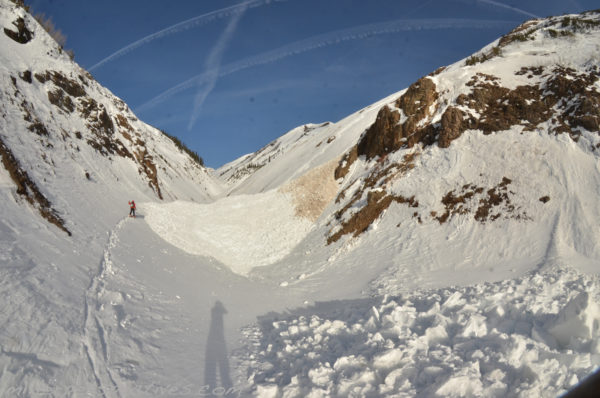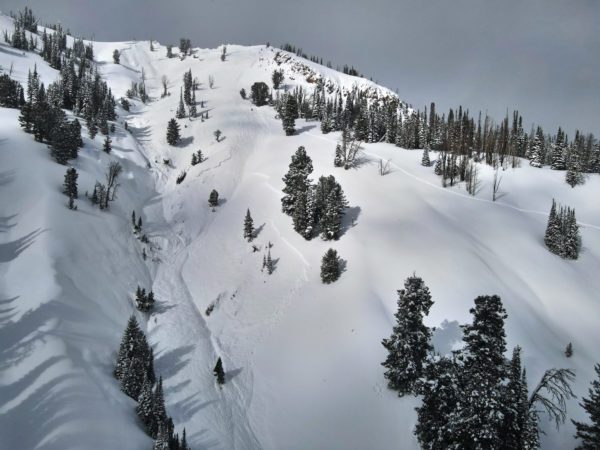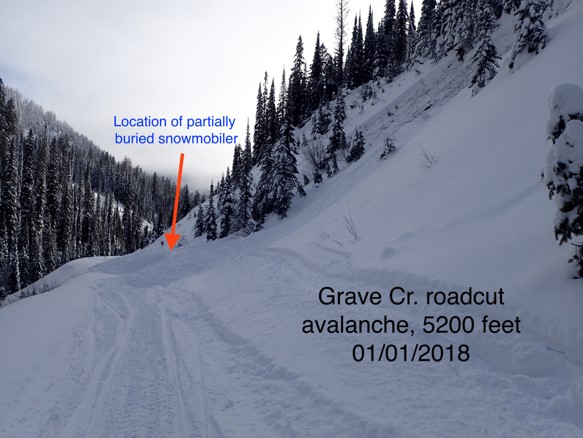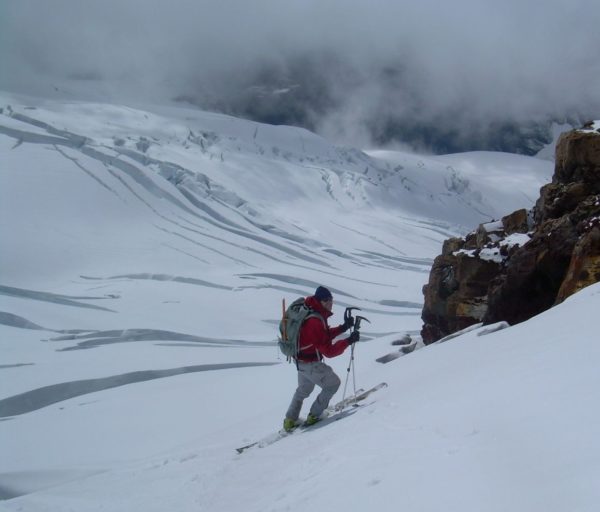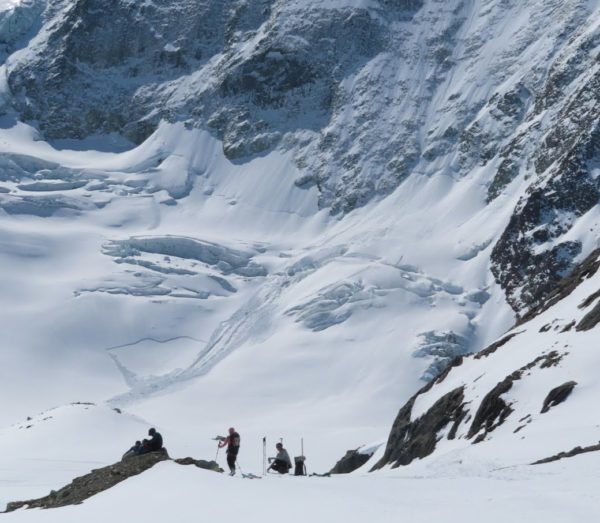Features, such as trees, cliffs, or gullies, that amplify the consequences of getting caught in an avalanche, either by increasing the burial depth or by causing traumatic injuries.
Even small avalanches can be deadly when they carry victims into terrain traps. When considering the potential outcomes of skiing or riding a slope, it is important to be aware of the potential consequences below you. Choosing terrain with clean runouts free from terrain traps can help reduce your risk.
- Trees: Getting dragged through trees can be like getting clubbed by dozens of baseball bats, or worse. Trees also contribute to deeper burials because debris piles up around them, and it can push you deep into a tree well. Trees are the most common terrain trap responsible for traumatic injury and death.
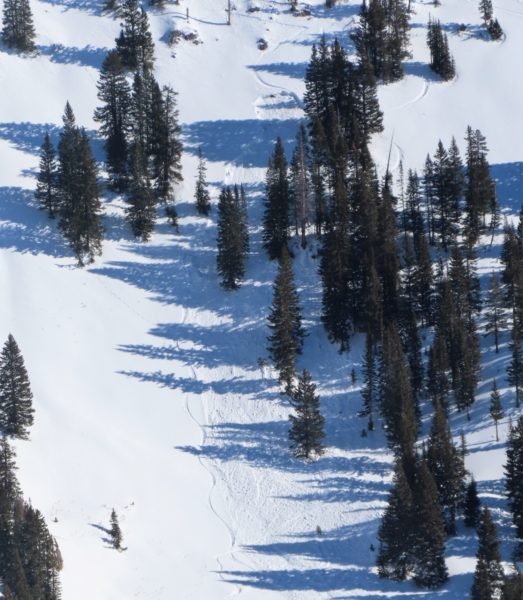
Traumatic injuries are common for victims who get carried into trees. Credit: Crested Butte Avalanche Center
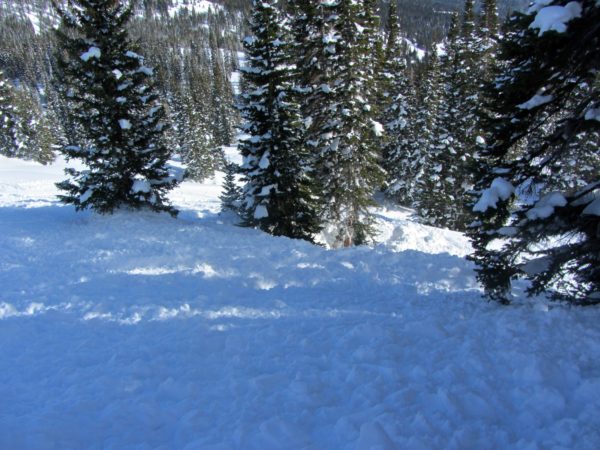
Trees also increase burial depth and complicate rescue because debris piles up around branches and into tree wells. Credit: Crested Butte Avalanche Center
- Cliffs / Rocks: Getting swept over a cliff or rock band will increase your chances of a traumatic injury. Use extra caution above cliffs or in terrain where you can get pushed into rocks.
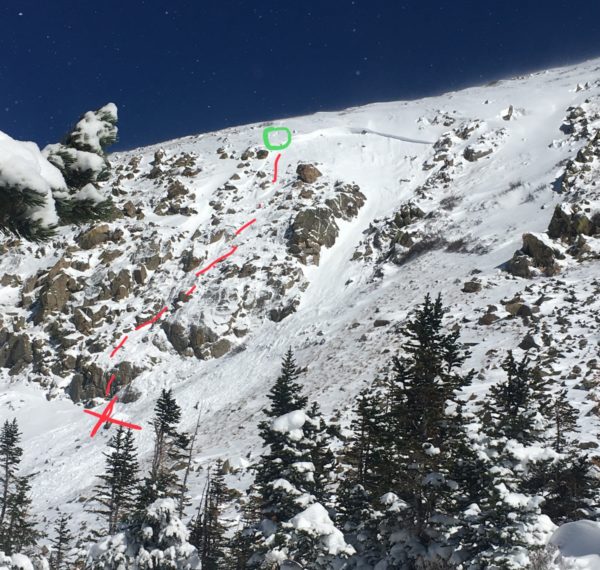
This small avalanche caused serious injury because the victim was carried through and over rocks. Credit: Colorado Avalanche Information Center
- Gullies: Gullies funnel debris into deeper deposits than planar or fan-shaped aprons. Even small avalanches can cause deep burials if you get pushed into a gulley, dramatically reducing your probability of survival.
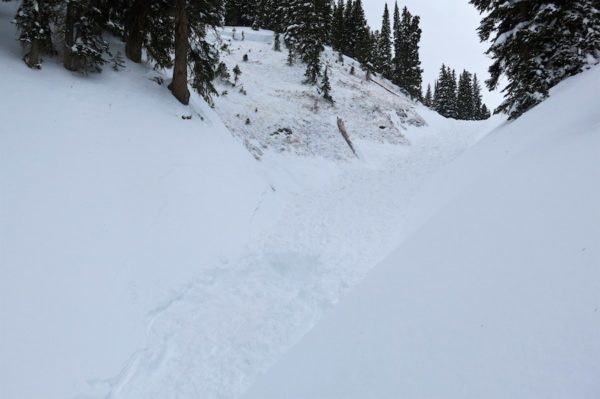
Even a small slope can cause a deep burial if it funnels into a gulley. Credit: Crested Butte Avalanche Center
- Road Cuts/ Benches: Debris piles up surprisingly deep on road cuts or benched terrain because of the abrupt change in slope angle. Be wary of skiing or riding above road cuts or similarly shaped terrain.
- Lakes/ Creeks: Getting carried into water often brings deadly consequences. Not only will debris pile up deeply on lakes or in creek beds, but drowning becomes a serious threat. Avalanches can easily break through ice into open water.
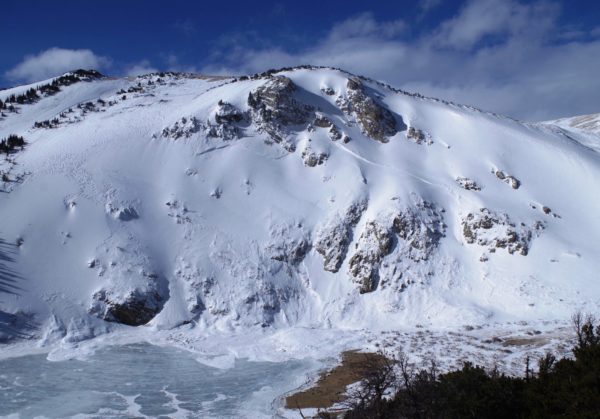
Lakes can cause cold water submersion or deep burials. Credit: Colorado Avalanche Information Center
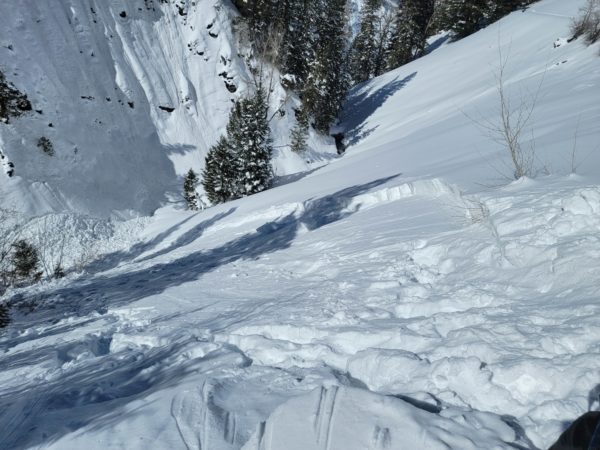
This avalanche piled up deeply into a creek and completely buried a hiker and two dogs. Credit: Colorado Avalanche Information Center
- Crevasses: Crevasses are deep cracks in glacial ice. Getting carried into a crevasse can result in serious trauma and deep burials that make for complicated rescue. Use extra caution when skiing or riding above crevasses or bergschrunds on a glacier.
- Couloir: Couloirs are steep gullies or chutes set into the sides of mountains characterized by rock walls on either side. Couloirs can channel a relatively small avalanche, even a small sluff, into a surprisingly fast and powerful amount of moving snow, and push victims into rock walls or carry them a long way.
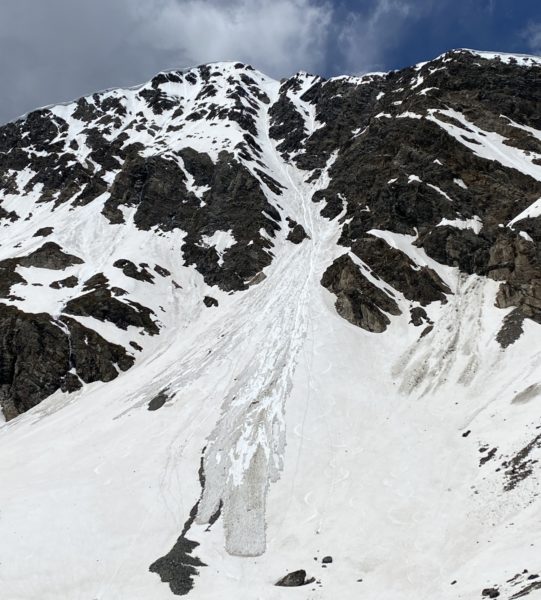
Long and steep couloirs allow shallow avalanches to gain speed and grow in size quickly. Credit: Colorado Avalanche Information Center
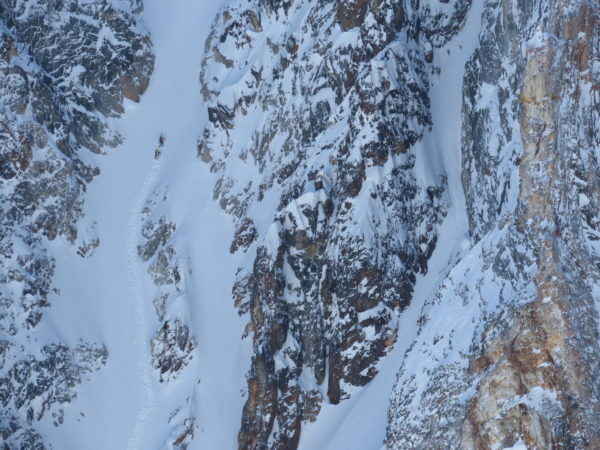
Getting swept down a couloir can result in a long and traumatic ride. Credit: Sawtooth Avalanche Center
